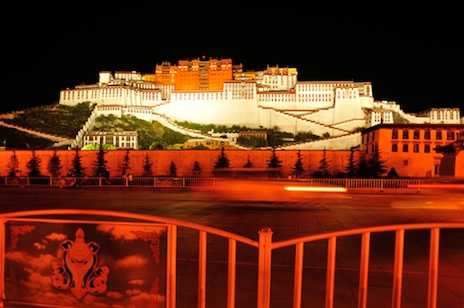
Picture: Shutterstock
On August 11, Dem Wangdak, a resident of Denma village and a well respected leader within the Kardze Tibetan autonomous region of Sichuan province, met with police to discuss a ban on the Denma horse festival, which had been due to commence that week.
Tibetan horse race festivals date back to the seventh century, during the reign of Tibetan emperor Songtsen Gampo, one of Tibet’s early Buddhist rulers credited with unifying many of the Tibetan tribes.
It has been one of the great Tibetan traditions, especially in the region of Kham, which has largely been absorbed into Sichuan province. Sichuan borders Tibet to the west, and many ethnic Tibetans reside in a number of so-called “autonomous” regions in the province, including Kardze.
Authorities have generally encouraged these festivals. The ban in Denma however appears to be part of an ongoing crackdown on anything religious in China, and of the mounting aggression of Chinese officials both in Tibet and in Tibetan areas of China.
According to Tibetan rights groups, in addition to his concerns about the banned festival, Wangdak also complained that Tibetan women had been harassed by visiting officials.
He was allowed to return home, but at midnight local paramilitary raided his home and arrested him.
The next day Tibetans gathered peacefully to protest. The paramilitary ordered them to disperse, and opened fire with live ammunition and tear gas when they refused. Wangdak’s teenage son is believed to be among the wounded.
Tibetan groups say the wounded were taken to hospital, where they were refused proper treatment for their wounds but kept under observation.
A week after the attack, Radio Free Asia reported that one wounded detainee, Lo Palsang, had committed suicide in custody, and a 22-year-old man had died from his injuries. Since then at least three more have reportedly died, including 60-year-old Tsewang Gonpo and 18-year-old Jinpa Tharchin.
Tibetans’ “Orwellian” autonomy
Demographers believe about half of the Tibetans in China live outside Tibet itself, which the Communist Party annexed in 1951. Many live in so-called autonomous regions, such as Kardze.
As evidenced by the experience in Denma, the nomenclature is Orwellian: these regions are anything but autonomous, but in fact are tightly controlled from Beijing. And many locals are highly dissatisfied.
The same week as the violence in Denma village, the Chinese Communist Party pulled off what was for all intents and purposes a PR stunt.
The Forum on the Development of Tibet, in the Tibetan capital Lhasa was sponsored by the Information Office of China's State Council, and chaired by Premier Li Keqiang and the regional government of Tibet, itself an “autonomous” region.
The meeting comprised politicians, academics and journalists from 33 countries including Britain, USA and India. It concluded with a communiqué entitled the “Lhasa Consensus”. Unsurprisingly, it was highly critical of the Dalai Lama and the Western media, and spoke glowingly about China's economic policies.
The Dalai Lama and other Tibetan leaders who live in exile have regularly accused the Chinese government of cultural destruction and hardline policies.
But China claims that the 100 or so conference attendees "unanimously agree that what they have actually seen in Tibet differs radically from what the 14th Dalai and the Dalai clique have said”.
Furthermore "participants notice that Tibet enjoys sound economic growth, social harmony, deep-rooted Tibetan culture and beautiful natural scenery, and the people enjoy a happy life".
The mounting aggression of Chinese officials on the ground and the concomitant anxiety and unrest among local Tibetans tell a different story.
Since February 27 2009, 131 Tibetans, including 21 women, have self-immolated in Tibet and China; 107 of the 131 are known to have died following their horrific, fiery protests in Sichuan, Gansu and Qinghai.
The 2013 US International Religious Freedom Report, released last month by US Secretary of State John Kerry, said that Tibetans regularly reported incidents in which they were denied hotel rooms, avoided by taxis, or discriminated against in employment opportunities or business transactions.
Upon releasing the report, Kerry said the Chinese authorities “arrest Tibetan Buddhists simply for possessing the Dalai Lama’s photograph”.
The most recent self-immolation was on April 15 in Kardze. Thinley Namgyal, 32, self-immolated at noon in Khangsar township in Tawu.
That happens to be the same county where, in July last year, Chinese forces opened fire on Tibetans and used tear gas to disperse about 1,000 monks and nuns who had gathered to celebrate the Dalai Lama’s birthday. At least eight were injured.
These incidents are the ones that slip through the net of China’s tight censorship and control of Tibet and Tibetan areas of China. They may well be just the tip of the iceberg.


